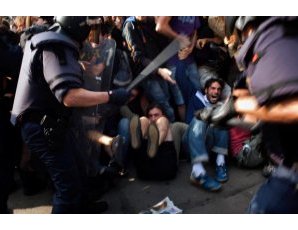Search
To search for an exact match, type the word or phrase you want in quotation marks.
A*DESK has been offering since 2002 contents about criticism and contemporary art. A*DESK has become consolidated thanks to all those who have believed in the project, all those who have followed us, debating, participating and collaborating. Many people have collaborated with A*DESK, and continue to do so. Their efforts, knowledge and belief in the project are what make it grow internationally. At A*DESK we have also generated work for over one hundred professionals in culture, from small collaborations with reviews and classes, to more prolonged and intense collaborations.
At A*DESK we believe in the need for free and universal access to culture and knowledge. We want to carry on being independent, remaining open to more ideas and opinions. If you believe in A*DESK, we need your backing to be able to continue. You can now participate in the project by supporting it. You can choose how much you want to contribute to the project.
You can decide how much you want to bring to the project.

Everything is happening very quickly these days. There is almost no time to stop and think. From the police charges in Plaza Catalunya to its mass occupation; from the events in front of Parliament to a city inundated by thousands of people from Plaza Catalunya to Pla de Palau. The chronicles of all revolutions tend to bear witness to the limited margin left for reflection. Which doesn’t mean to say that there isn’t any thinking going on. Thinking on the run, active thought. But I would like to pause in the face of some images: without a doubt those of people taking to the street; a girl shouting at a policeman questioning why is he pushing her as she hasn’t done anything; a woman in front of a police van; policemen wielding truncheons and pushing their weight about; a boy with a bleeding gash in his head; politicians protected by the security forces, shielded, isolated; a rubbish bag flying towards the head of a man in a suit entering Parliament, with his bald patch covered in graffiti. As well as the headlines of newspapers that change “Indignados”(The indignant) to “Indignación” (Indignation) in reference to the same man in the suit.
Frequently in art criticism workshops I say that a critical text sometimes only needs to be a good description. In describing of some of the above images it would be enough to think about the meaning of the word violence. It seems that it makes the whole world uncomfortable. It doesn’t seem out of place to stop and think about who uses it, who is the true object of the violence and who monopolizes its use. The physical use, with truncheons, thumps, bruises as well as the more figurative use through need or exclusion.
We are all against the use of violence. But the ones who categorise it, are Felip Puig, the political elite and the press, who have qualified the events in front of the Parliament as kale borroka (in reference to the street violence in the Basque country). The question is just what would they call a Molotov cocktail? An atomic bomb! Or the atomic bomb? The Big Bang! Precision in language is an imperative: the blockading of the entry to Parliament; throwing rubbish bags; spraying of graffiti; pushing and shoving; police charges; brutality and truncheons. Lets just stop and think about which of these forms of violence have made the most noise and which have hurt us more. And also, who is doing the victimizing and who is the victim.

http://www.davidgtorres.net
"A desk is a dangerous place from which to watch the world" (John Le Carré)